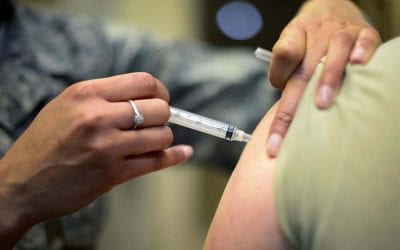Last month, a 49-year-old San Diego, Calif., man, Richard White, was exploring Denali National Park and Preserve in Alaska, hiking alone in the Park. He came upon a large grizzly bear which attacked, mauled and killed him. His death was the first fatal bear mauling anywhere in Alaska in the last seven years, and the only one in the 6-million-acre park’s recorded history, going back more than 90 years.
Investigators have discovered White didn’t follow standard safety procedures for grizzly encounters in the Park. Consider the evidence below and determine for yourself if this was a needless death.
Investigators recovered the man’s digital camera and reviewed the time stamped images he made of the grizzly. According to Denali’s Park Superintendent, Paul Anderson, the photos show the bear grazing, not acting aggressively, before the attack.
According to park officials, White was along the Toklat River when he came upon the bear and was within 50 yards of it. The time stamps show White stayed within 50 yards of the bear for at least eight minutes, without moving away from the grizzly at any time during that interval. He was then attacked and killed by the bear.
Denali requires every hiker and backpacker be educated in how to safely make their way through the park. It’s clear White ignored key parts of the education.
The park explains to every hiker, and includes in their Alpenglow Visitor Guide, the following safety information:
“Responsible visitors use binoculars or a telephoto lens to observe an animal’s behavior. Do not engage in photography if an animal moves closer than the minimum distance allowed…” (Rangers explain, and the guide clearly shows, the minimum distance for bears is 300 yards (275m).
I suspect you’re thinking White died needlessly.
Last week I wrote about wildlife travel, and how to get great wildlife photographs when traveling to diverse wildlife destinations.
As more and more travelers opt for vacations into far-flung areas to view and photograph the natural world, they need to know more than great wildlife photography techniques. Travelers must know how to stay safe while in national parks, wildlife preserves and refuges, jungles, the polar regions, and other areas.
Here are my safety guidelines for travelers visiting wildlife destinations:
• Unless you’re very wildlife knowledgeable, and highly experienced in wildlife travel, use an experienced, professional guide. They understand what it takes to stay safe, and will enhance your experience with their knowledge.
• Whether you have a guide, or are traveling on your own, know the safety rules of the area, and obey them completely at all times, even when you think it might be alright to bend the rules a little bit. Had White immediately moved 300 yards from the grizzly after encountering it so closely, he would likely be alive to tell everyone about the adventure.
• Never feed wild animals.
• While I am a big believer in learning about the animals you expect to see at your destination to enhance your enjoyment of viewing them, don’t think that makes you an expert who can predict their behavior. Never ascribe human qualities to wild animals. There may be something specific about an individual animal that you can’t detect which can aggravate it, affect its behavior, and make it aggressive.
• If you’re in an open vehicle, even with a trained guide, don’t stand up at any time, unless your guide tells you it’s alright. Any sudden movement, or a change in how the vehicle normally looks to an animal, may cause the animal to become startled and possibly defensive.
• If you’re in a self-drive wildlife area, never get out of your vehicle, and keep your windows up. If you’re in a guided vehicle, never get out unless invited to do so by your guide.
• When you’re on foot, try to stay downwind from the animal. If an animal catches your scent, its behavior is unpredictable.
• If you encounter an animal, and are not at the minimal safe distance or further from it, don’t run to safety. Instead, move back slowly, steadily, and quietly.
• If you encounter an animal and are too close, don’t take that “essential” photo before moving back. The noise from the camera alone may startle it.
• In case of attack, know how to react to an animal encounter before you go out. There are rules of thumb which include: curl into a ball and play dead (polar bear), run (elephant), stand your ground (lion), run perpendicular to the animal and climb a tree (black rhino).
• While I know many hikers who go into the wild and prefer to go alone to enjoy the solitude, frankly, I always suggest hiking in at least pairs. I have taken many on hikes in national and state parks and refuges over the years, and can tell you unequivocally that accidents can happen. I’ve had to help hikers/climbers with broken legs, snake bites, puncture wounds, severe concussions, badly lacerated legs from falls, and many other injuries requiring help. Many of these people would have been in serious trouble without assistance.
After many years working in corporate America as a chemical engineer, executive and eventually CFO of a multinational manufacturer, Ned founded a tech consulting company and later restarted NSL Photography, his photography business. Before entering the corporate world, Ned worked as a Public Health Engineer for the Philadelphia Department of Public Health. As a well known corporate, travel and wildlife photographer, Ned travels the world writing about travel and photography, as well as running photography workshops, seminars and photowalks. Visit Ned’s Photography Blog and Galleries.


